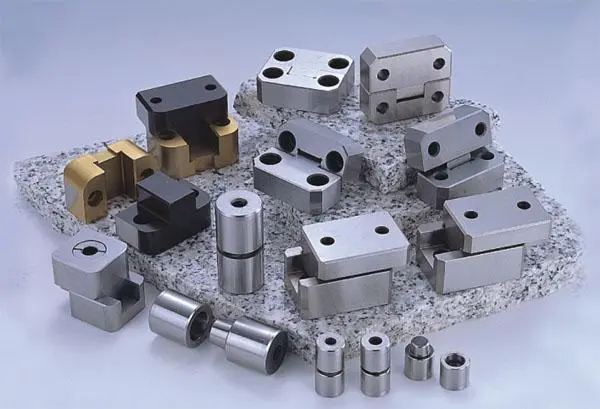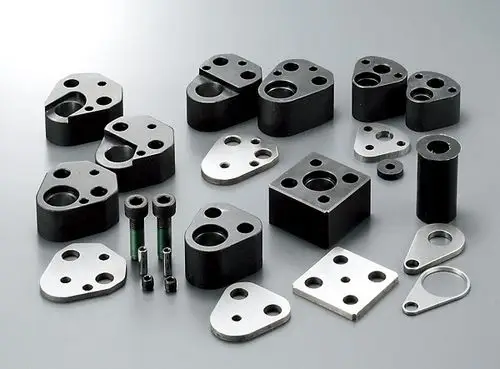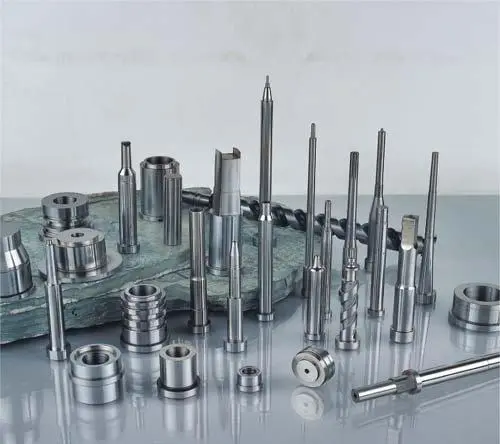News
Future Development Trends of Precision Molds
In today's highly industrialized era, precision molds, as an important cornerstone of manufacturing, are of vital significance to improving product quality, reducing production costs, and promoting technological innovation. With continuous technological advancements and increasingly diversified market demands, precision molds are facing a series of new opportunities and challenges, and their future development trends are also showing multifaceted characteristics.
In today's highly industrialized era, precision molds, as an important cornerstone of manufacturing, are of paramount significance in improving product quality, reducing production costs, and driving technological innovation. With continuous technological advancements and increasingly diversified market demands, precision molds are facing a series of new opportunities and challenges, and their future development trends also exhibit multifaceted characteristics.
I. Higher Precision and Complexity
With the increasing demands for product precision and performance in industries such as electronics, communications, and medicine, the precision and complexity of precision molds will continue to improve. For example, in the semiconductor manufacturing field, the integration of chips is becoming increasingly high, and the precision requirements for packaging molds have reached the micrometer or even nanometer level. To meet these needs, mold manufacturing enterprises will continuously adopt advanced processing technologies, such as electric discharge machining (EDM), laser processing, and electrochemical machining, while combining high-precision measurement equipment and intelligent control systems to ensure the precision and consistency of the molds.
In addition, the demand for molds with complex shapes and structures is also increasing. For example, lightweight structural molds in automotive parts and complex curved surface molds in aerospace, which require mold design and manufacturing technologies to achieve more complex geometric shapes and stricter tolerance requirements.
II. Material Innovation
The application of new materials will become an important direction for the development of precision molds. High-strength, high-wear-resistant, and high-temperature-resistant mold materials can improve the service life and stability of molds.
For example, cemented carbide has high hardness and good wear resistance, and is often used to manufacture punches and dies for stamping molds, which can maintain good performance during high-pressure, high-frequency stamping processes. Ceramic materials such as silicon nitride ceramics have excellent high-temperature resistance and wear resistance, and are used in plastic injection molds and die-casting molds, and can withstand the scouring of high-temperature plastics or metal liquids. Special alloy steels such as hot-work tool steel H13, due to their good toughness and thermal fatigue performance, are widely used in die-casting molds and hot forging molds.
At the same time, the application of composite materials in molds will gradually increase to achieve better performance and lightweight. For example, molds made of carbon fiber reinforced composite materials have the advantages of high strength and low weight, and are suitable for molds in the aerospace field with strict weight requirements.
In addition, with the development of 3D printing technology, special materials that can be used for 3D printing molds will continue to emerge, bringing new possibilities to mold manufacturing. These innovative materials can not only improve the performance of molds but also reduce the manufacturing cost and cycle of molds.
III. Intelligent and Digital Manufacturing
The advancement of Industry 4.0 will lead the manufacturing of precision molds towards intelligence and digitalization. By introducing intelligent manufacturing systems, such as computer-aided design (CAD), computer-aided manufacturing (CAM), and computer-aided engineering (CAE) software, the entire process of mold design, manufacturing, and testing can be digitalized. At the same time, using the Internet of Things (IoT) technology, the interconnection between devices can be realized, and the parameters and status during the production process can be monitored in real-time for predictive maintenance and quality control.
Intelligent mold manufacturing factories will be able to quickly adjust production plans according to customer needs, optimize production processes, and improve production efficiency and product quality. For example, through big data analysis and machine learning algorithms, mold processing parameters can be optimized to improve the processing precision and surface quality of molds.
IV. Green Manufacturing
Increased environmental awareness is driving the precision mold industry to transition to green manufacturing. In the design and manufacturing of molds, more attention will be paid to energy saving and emission reduction, resource recycling, and reducing environmental pollution. For example, using energy-saving processing equipment and processes to reduce energy consumption; optimizing mold structure to reduce material waste; developing mold remanufacturing technology to extend the service life of molds and reduce waste generation.
V. Collaborative Innovation and Industrial Chain Integration
In the future, competition in the precision mold industry will no longer be limited to individual enterprises but will be between the entire industrial chain. Mold enterprises will strengthen collaborative innovation with upstream and downstream enterprises to form close cooperative relationships. For example, mold enterprises and material suppliers jointly develop new mold materials, and jointly develop mold solutions for new products with end users.
At the same time, industry integration and mergers and acquisitions will intensify. Large mold enterprises will integrate resources, expand their scale, and improve their market competitiveness; small mold enterprises will occupy a place in the segmented market through specialized and characteristic development.
In summary, the future development trend of precision molds will revolve around precision improvement, material innovation, intelligent manufacturing, green environmental protection, and industrial chain integration. Only by keeping up with these trends, continuously increasing R&D investment, and improving technical level and innovation capabilities can enterprises remain invincible in fierce market competition and promote the development and progress of the entire manufacturing industry.
In the actual development process, we have seen some enterprises achieve remarkable results in these aspects. For example, a well-known mold enterprise, by introducing advanced processing equipment and digital design software, successfully developed a complex body mold for a high-end automobile manufacturer, which not only achieved industry-leading precision but also significantly shortened the production cycle.
For example, another mold enterprise, in cooperation with a research institution, developed a new type of wear-resistant mold material, which is applied to the mold manufacturing of electronic components, greatly improving the service life of the mold and reducing the customer's production cost.
These successful cases fully demonstrate the feasibility and importance of the future development trend of precision molds, and also provide reference and inspiration for the development of the entire industry. It is believed that in the future, precision molds will continue to play their key role and make greater contributions to the prosperity of the manufacturing industry.



